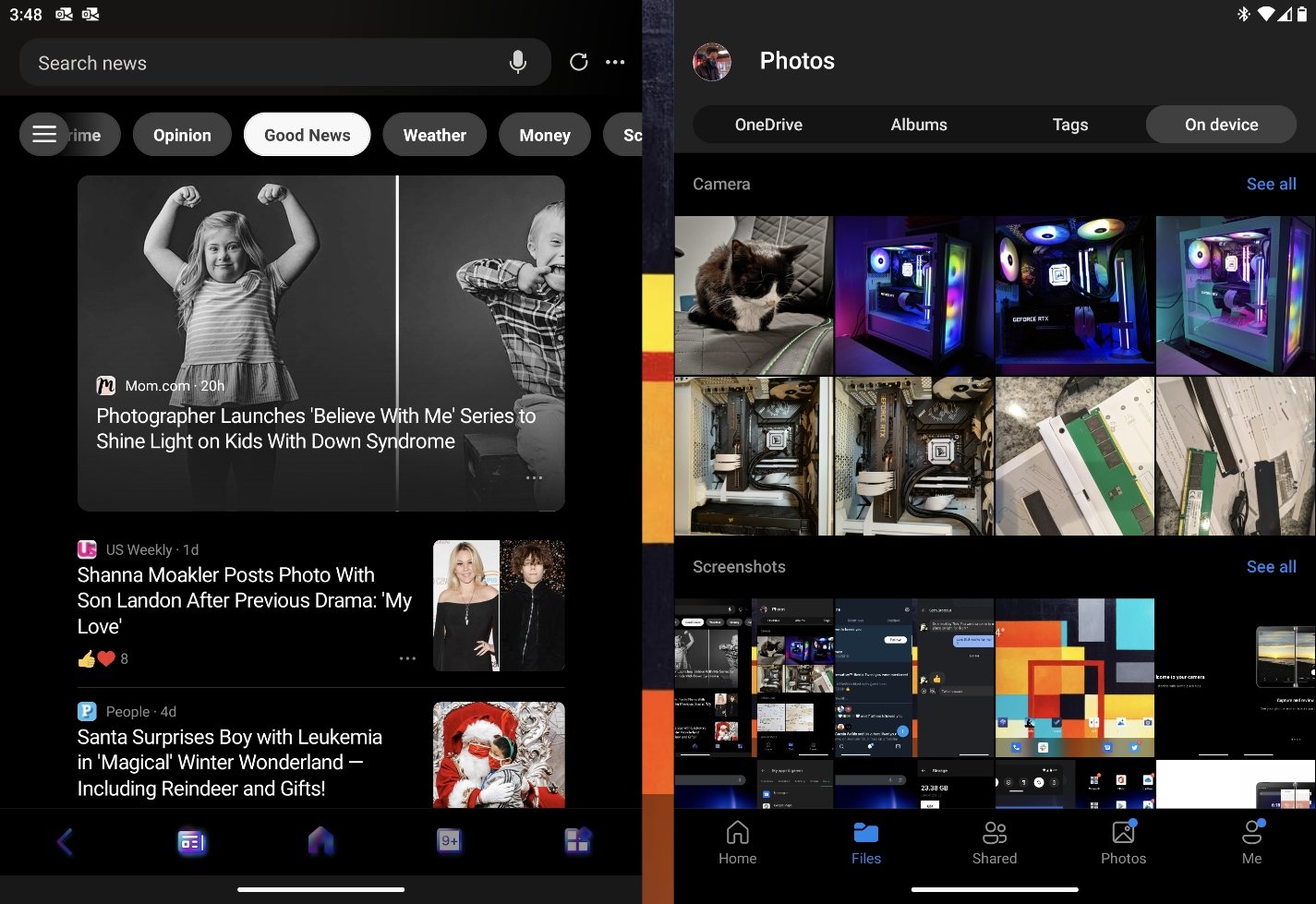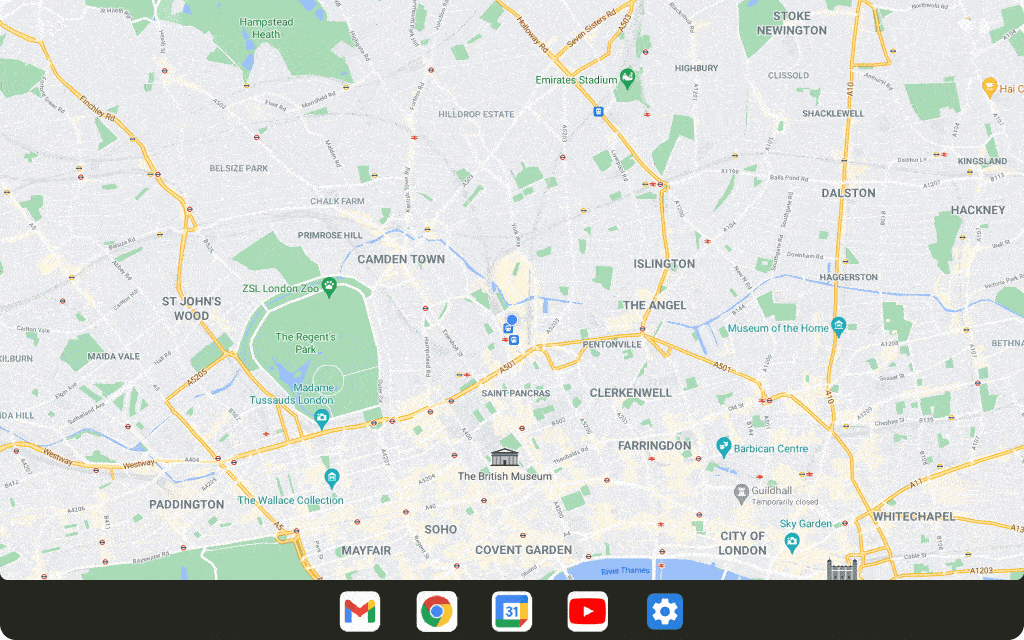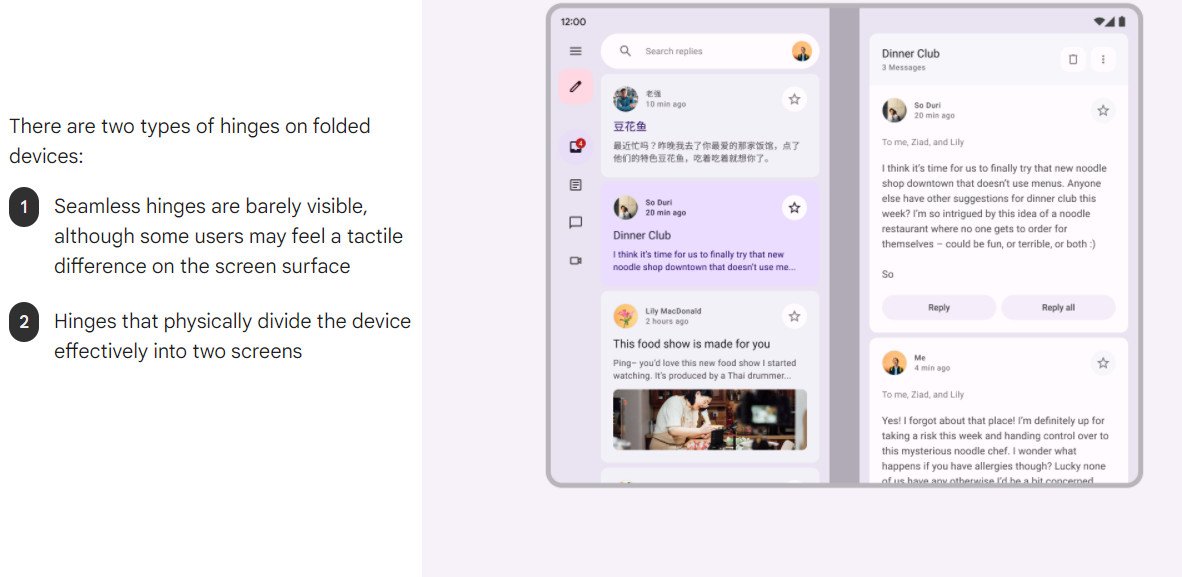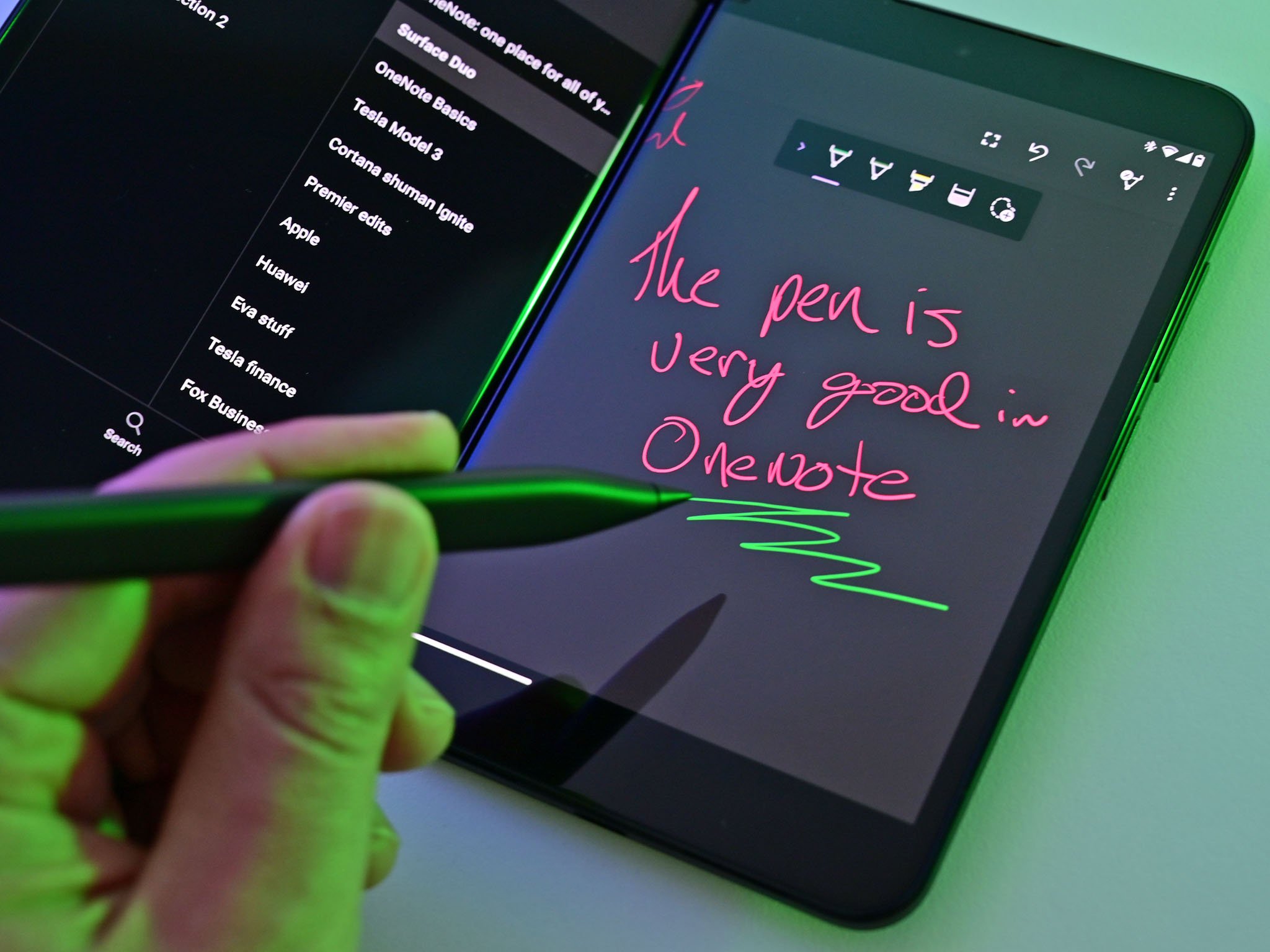Google defines foldable as including dual-screens, making this a non-issue.
A few weeks ago, Google announced Android 12L, which was previously known as Android 12.1. According to Google, the OS update is due sometime in the first half of 2022. But what makes it a big deal is this iteration of Android is the first to really focus on foldables and dual-screen devices.
Yes, I said dual screen. Despite the light-on-details PR blog mentioning foldables, many have tried to decipher that Google means phones like the Samsung Galaxy Fold 3 and not Microsoft's Surface Duo. After all, if Google intends to include dual screens, why not mention it?
It turns out Google does. Let's go through the developer guides to settle this once and for all.
How Android "sees" Surface Duo
 Android fills in the gap via software when doing a screenshot on Surface Duo 2.
Android fills in the gap via software when doing a screenshot on Surface Duo 2.
Before we get started, I want to clarify something about Surface Duo (currently on Android 10) and Surface Duo 2 (currently on Android 11). Both operating systems "see" these phones as single-screen devices. Indeed, on Android 11, the OS now draws the gutter — the physical space between both screens. You can see this in screenshots where you get the whole canvas.
A lot of the "magic" with Surface Duo and dual-screen apps is a combo of Microsoft Launcher, firmware, and, increasingly, Android itself. A lot of what Microsoft is doing today on Surface Duo is being built-in to future iterations of Android. That's the big news.
As a side commentary, I believe this is one reason Microsoft is not heavily investing in customizing Android to maximize Surface Duo's efficacy today. While the user experience currently lags compared to the vision, it is clear from Android 12L that Google is baking a lot of this stuff into the OS. If Microsoft were to invest resources into OS customization, it would be redundant and useless within a year. Why invent the wheel when someone else is already doing the work for you?
What is Android 12L?
 Example of split screen and new taskbar for foldable devices in Android 12L.
Example of split screen and new taskbar for foldable devices in Android 12L.
Android 12L, according to Google, is "a special feature drop that makes Android 12 even better on large screens." More specifically, the OS update optimizes the system UI for new form factors and gives developers new tools (APIs) to improve apps for foldable displays. It's the formalization of what Samsung, Microsoft, LG, Huawei, and others have been forcing to happen over the last few years.
The motives should be clear as to why Google would want to implement these variations. Samsung is driving a lot of this with its Fold and Flip series of phones. Microsoft is there, too, with Surface Duo. But Google expects more devices in 2022, noting that this feature drop is timed "for the next wave of Android 12 tablets, Chromebooks, and foldables."
Even Google is rumored to make its own foldable phone(s) next year, presumably launching with Android 12L.
Features like a two-column notification shade with notifications on one side and Quick Settings on the other are one example of a UI change. The ability to span apps and have apps shift over to one side of the display is another. This latter ability is what Microsoft does today on Surface Duo, but instead of being part of Launcher and firmware, it can be built directly into the OS. Google Play will also highlight apps that are optimized for these new form factors.
You can read more about it from Google's 12L summary, but it's in the developer documents where it gets interesting.
Google defines foldables as including dual screens
 Are these both foldables? They are.
Are these both foldables? They are.
But Google just talks about foldables, right? That's the wrong question. What you should be asking is: How does Google define foldables? Because the company gives a definition.
Let's start with Google's Material Design 3 — the next evolution of its UI aimed directly at "adaptive experiences." On its page, Google thoughtfully characterizes the term, which I think is essential for this conversation. When it comes to foldables, here is the direct definition, explicitly referring to hinges:
There are two types of hinges on folded devices:
- Seamless hinges are barely visible, although some users may feel a tactile difference on the screen surface
- Hinges that physically divide the device effectively into two screens
Point #2 is the most relevant and seemingly ends the discussion: Foldable includes dual screen. But if you want more, Google goes on to say:
In an unfolded posture, the device's folding hinge can be noticeable on some models. In the unique case of Microsoft's Surface Duo, the hinge divides the screen physically.
 How Google defines foldable screens.
How Google defines foldable screens.
So, Google calls out Surface Duo when talking about the new Material Design 3. Google then gives examples of how developers should design their UI around such constraints:
On devices with a physical hinge, designing the screen as two distinct halves allows a composition to work well across the seam and screens … Avoid placing key actions, such as dialog buttons, along the center hinge.
The complete overview of Material Design 3 is highly fascinating, so I encourage you to read it if you're interested in this topic.
Turning to Android app development and 12L, Google lays out quite a lot in its Android developer guides. Here are some samples explaining foldable and dual-screen:
Under "Learn about foldables:"
Foldable devices can fold in many ways, such as inward (with the display folding into the interior of the device) or outward (with the display wrapping around the device). Some foldables have two screens; others, such as foldable flip phones, only one.
Foldable devices have a fold in the display that separates two portions (typically halves) of the display. The fold has dimension and can separate the two portions with an occlusionType, which defines whether the fold occludes part of the display (a full occlusion is reported for dual screen devices).
This occlusionType is essential, as this is what helps define that software gutter for dual-screen devices like Surface Duo. It's again referenced under "Make your app fold aware," where the documentation gives further information on what "foldable" refers to:
A FoldingFeature is a type of DisplayFeature that provides information related to the fold of a foldable display or the hinge between the two physical display panels of a dual-screen device.
A FoldingFeature also includes information like occlusionType, which indicates whether the fold or hinge conceals part of the display, and isSeparating, which indicates whether the folding feature creates two logical screen areas. This information can be used to decide where to position on screen elements to support dual screen devices and avoid positioning active elements like buttons on occluded folding features.
More references to Surface Duo are found under Jetpack WindowManger, specifically under the codelab section, which gives a tutorial on building such apps:
This practical codelab will teach you the basics of developing for dual-screen and foldable devices. When you're finished, you'll be able to enhance your app to support devices like the Microsoft Surface Duo and the Samsung Galaxy Z Fold3.
As should now be evident from Google's definitions and examples in the official Android documentation, dual-screen devices are a subset of foldables. Android 12L goes a long way to formalize this distinction in the OS, apps, and UI.
Microsoft also has a blog that summarizes what's new in Android 12L and how it ties into its own work to help developers, which is worth a read.
Surface Duo and Android 12L should be exciting
Hopefully, this walkthrough has sufficiently demonstrated that Android 12L, and future versions of Android hardware, absolutely include dual-screen devices under the rubric of foldables. I don't see this as debatable once one reads the supporting documentation (and not just a PR blog summary).
Of course, none of this means Surface Duo suddenly turns into a slam dunk. Microsoft needs to address touch sensitivity issues sooner than later, which has nothing to do with Android 12L. Other "quirks" with the camera app, updating its own apps, and improving the inking experience all need to be fixed, too. Lump in concerns over pricing and even just convincing people to want this device are other significant obstacles.
But Android 12L is a big deal, too. By the time it comes out, the Surface Duo experiment will be approaching its third year. That means the OS may finally catch up to where Microsoft is with the hardware, especially for overall OS design, features, and app compatibility. Android 12L also begins to mainstream these new folding phones and devices, giving Surface Duo a much-needed halo effect.
The $64,000 question is can Microsoft deliver Android 12L in a timely fashion? My gut feeling is the company may pass over Android 12.0 and push 12L instead (as it should), but it needs to do so quickly to avoid replicating the Android 11 fiasco with the original Surface Duo.
We'll see what happens in the coming months as all eyes are on Android 12L.






0 comments:
Post a Comment